When you break it down, moments are what our lives are essentially composed of. Every moment of our existence, whether great or bland, is important in contributing to who we are, what we’ve done, and what we can learn about ourselves for the future. I think that’s why pictures and videos nowadays are so important to us as a society because, as they say, if you didn’t get evidence of the moment did it even really happen? More importantly though, I think the better question is if it did happen… what did we gain from it? What did we learn? These are all questions that opportunities like the OWUSS Rolex Scholarship pushes its recipients to answer during our year abroad. It’s why during our year each scholar gets their own underwater camera gear (thanks to sponsors Reef Photo and Video, Nauticam, and Light and Motion). Our job is to find the answer to that question using our camera as the vehicle to remind us how, when and what we have gained from our experiences via these captured moments. The only thing is that for many of the scholars, myself included, when we start out we have no idea how to work a camera outside of the occasional cellphone selfie. To remedy that, the scholarship emphasizes the importance of learning how to use said given underwater camera gear by providing us with the connections to learn how. Now it was my turn to understand how to better capture the moment and what better place to start than in the all too famous Bay area?

Hanging out with California’s famous sea lions

After my lovely research adventures in Moorea, I traveled back to northern California except this time, instead of doing a hasty and stressful layover, I was going to be there for about a week learning more about how to work my underwater camera gear and testing out my new DUI drysuit that had just come in from Blue Green Expeditions! Additionally, this time it was also going to be different because I would have a partner in crime during my experience, something I hadn’t had before. My plane landed in San Francisco, where I met up once more with my Coordinator, Alison LaBonte. After having a little soiree and meeting new folks like Brenna Mahoney and Yasmeen Smalley, I would be off to Monterey Bay, where my training would commence. Being the extremely angelic person that she is, Alison let me borrow her car to drive down there where I met up with my amazing host Becca Boring at the world’s largest underwater camera and photography equipment supplier, Backscatter.
Becca was the sweetest thing and upon my arrival, she introduced me to her coworkers as well as the founder and owner of the company, Berkley White! I also met up with my partner in crime and Boston Sea Rovers Intern, Russell Laman! As soon as I arrived, many of the team members started helping me to learn about my camera. We went over macro vs. wide-angle shots, ISO, shutter speed, the different camera modes, how to put more of my camera gear together, and what each piece of my camera kit was for. It was a bit of a whirlwind of knowledge at first and still is a bit to me in some ways. Still, everyone was so caring and helpful in my learning. However, no amount of lecture gives you camera experience more than just going and trying things out for yourself.


Russell and Berkley
Of course, that same thing could be said about drysuits as this was going to be my first time trying my new one out. Unfortunately, though, it showed. Our first dive was to be a shore dive. While I had done many shore dives before and have had my drysuit certification for almost a year now, this time was different. Not only was it a new drysuit that I wasn’t used to, but I had never walked into a body of water with such swell in one– and not while carrying bulky camera gear by hand. In short, the first part of my dive was a complete and pretty hilarious fail. As we waded into the water’s powerful waves with all our gear on, I struggled to get my fins attached while in the water. I couldn’t quite bend over for some reason and the water kept pushing me over before I even had the chance to get a buckle secured. I was struggling as wave after wave thwarted my efforts until I finally realized that in all that thrashing around I had completely lost my camera under the murky green waves. I was terrified. I had potentially lost thousands of dollars of equipment that I had just learned how to use properly! I wanted to smack myself but instead resigned myself to look for my camera gear. However, as I tried to look under the turbid waves, I realized I couldn’t get down. I was too buoyant and as the waves kept crashing on me during my struggle to find my camera, a wave tussled one of my fins out of my hands. It took Backscatter producer and fellow dive buddy Robin Dodd and Becca (who bravely got into the water in her street clothes, I might add) to help me and retrieve the camera. It was so embarrassing and hilarious but after I got some more weight, my fins on, and a more secure clip for my camera I was able to finally go dive in my new drysuit, with my new camera gear.


One of the first things that I learned about the Monterey Bay waters was how green and dark things could get because even though my dive buddy descended with me, as we went down in a matter of moments he couldn’t be seen anymore. Of course, we eventually found each other but as I started tampering with my camera, I was noticing all of my photos were coming out like I was in a starless night. It surprised me that there could be places with worse visibility than the waters from Ohio, of all places, but here we were. By the end of the dive, I had nothing viable in my photo gallery. It appeared there was still a lot more learning to go.
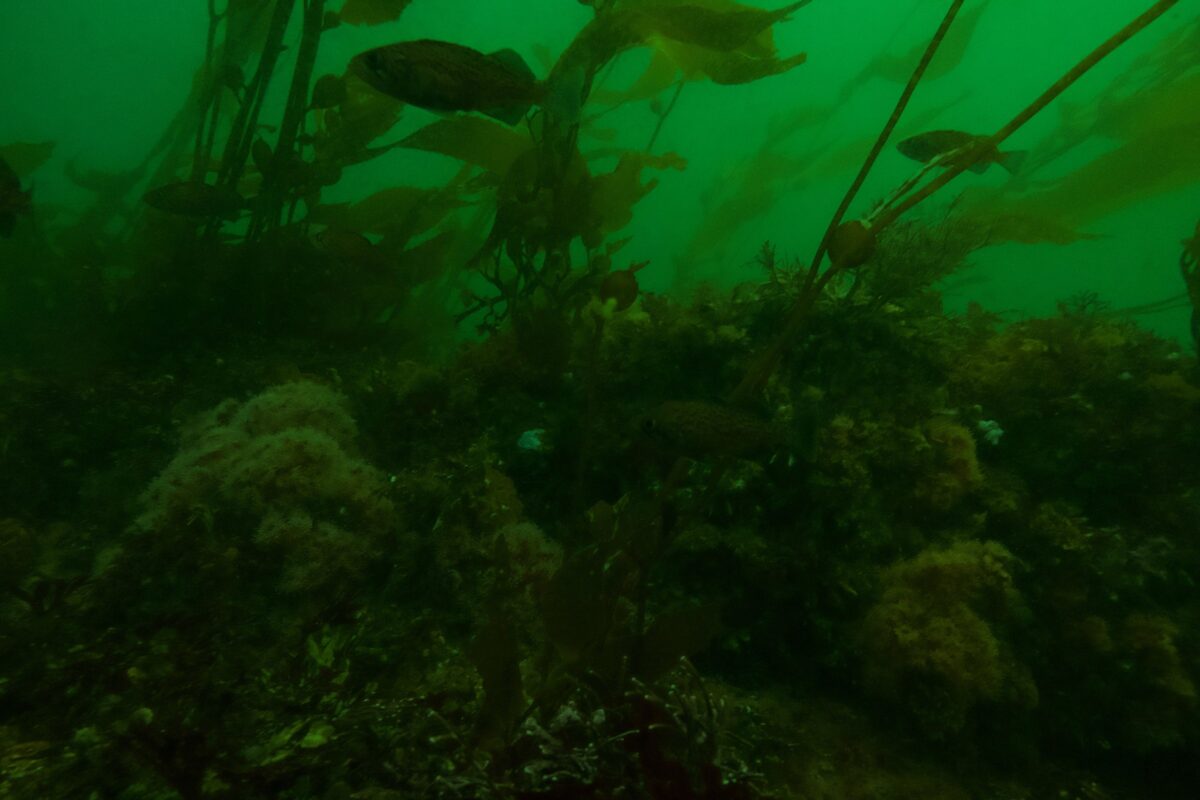

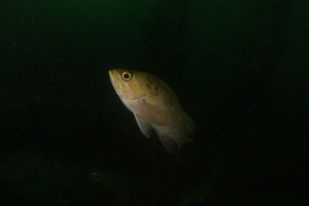

The pictures I took while trying to understand how my strobes work

Once we got back from the dive it was already pretty late so Russell and I went to the hotel we were staying at and I got to learn even more about him. Through our conversations, I learned that Russell had been diving since he was 9 years old and was the son of a National Geographic Photographer and a Professor at the University he attended. I could already tell he was extremely talented when it came to a camera. I was astonished at what a cool life he had led but also at the same time I was a bit sad that we weren’t starting at the same level as I had originally thought we would be. Still, I took his skill as something to aspire to. It was impressive and I would hopefully be impressive, too, one day.

With that in mind, the next day when we got back to Backscatter, I voiced my camera lighting concerns and Robin showed me how to better use my strobes. Now with even more information, I was ready to go on our next dive and take some pictures… however my drysuit was not. On our first dive of the morning, we (to my internal thanks) took a boat out. Once I jumped in the water off the boat, I slowly started to feel a bit cold in my feet. Quickly it spread to my ankles and to the side of my waist. I soon discovered that, to my disappointment, my drysuit hadn’t been zipped up all the way.
For those that don’t know, the purpose of a drysuit is somewhat intuitive in the name. Outside from your head and sometimes your hands, a drysuit seals the water from getting to the rest of your body so that you stay warmer versus a wetsuit which traps water against your skin to give you relative warmth. A leak in your drysuit, however, usually results in an abandoned dive which is exactly what I had to do. Thankfully, Berkley was kind enough to let me borrow some of the clothes that he kept on the boat and even went as far as to go to his house to dry my things. I was super grateful to him, and all the team’s help and support, but I admit I was also a bit saddened, especially when the group came back with some amazing seal photos! I would have to try next time… and so I did.

We went out again later in the day. This time luckily everything went much better. The only thing that was still lacking was the quality of some of my photos. Even though there was now more light with the strobes, my images were still in poor shape. In some places where there was more natural light and I was mostly just fiddling around with my camera, the photos came out just fine. There was no technique used but I could still pull off something decent. Here, however, things were still so dark and murky that barely anything was showing up, strobes notwithstanding. At some point we even tried to practice taking pictures on the shore at night. It was very cool to see how my camera could shine a different light on things but eventually, as luck would have it, my camera died and I happened to have left the charged battery in my bag at the store. It was going to be hard but I had to figure this out.

The cool pictures my camera took at night.
The following day we went on several dives. Though this time I had no issues with my drysuit or my fins, there were some technical issues with my tank valve breaking and my second stage regulator head popping off (Why is it always me?). Nevertheless, we had some great dives that day. As we were underwater, I played around a bit more with the camera, switching modes and trying new things out and as I did, I discovered some things that I liked and that helped. My pictures were still somewhat bad, but I could see improvement happening. There was hope for me yet! The same thing happened on the next dive. When we got back to shore and reviewed the photos we had taken, Backscatter CEO Jim Decker looked at my photos and helped me realize something. He said, “What are you trying to take a picture of? What is your focus on?” I answered, “I don’t know– I was just trying to get a decent picture of something.” But as we looked at my photos, I noticed that in my attempts to capture all the things I was seeing, my pictures lacked any real focus and that with some more acute attention to one subject, other aspects of the moment would present themselves. It sounded really simplistic, but it really helped me moving forward.


Before we went on our next dive Russell and I got the privilege of meeting legendary black and white photographer Chuck Davis, who took us out to lunch. As we were there we got to talk about all of his work and his family and what an incredible life he had lived. It was awesome and inspiring to hear his stories. In fact the next dive we did I decided to practice some shots in black and white and I really liked it. Although I still went back and forth from color to no color in order to practice in general, after talking with Chuck, I really found myself enjoying playing with black and white photos.
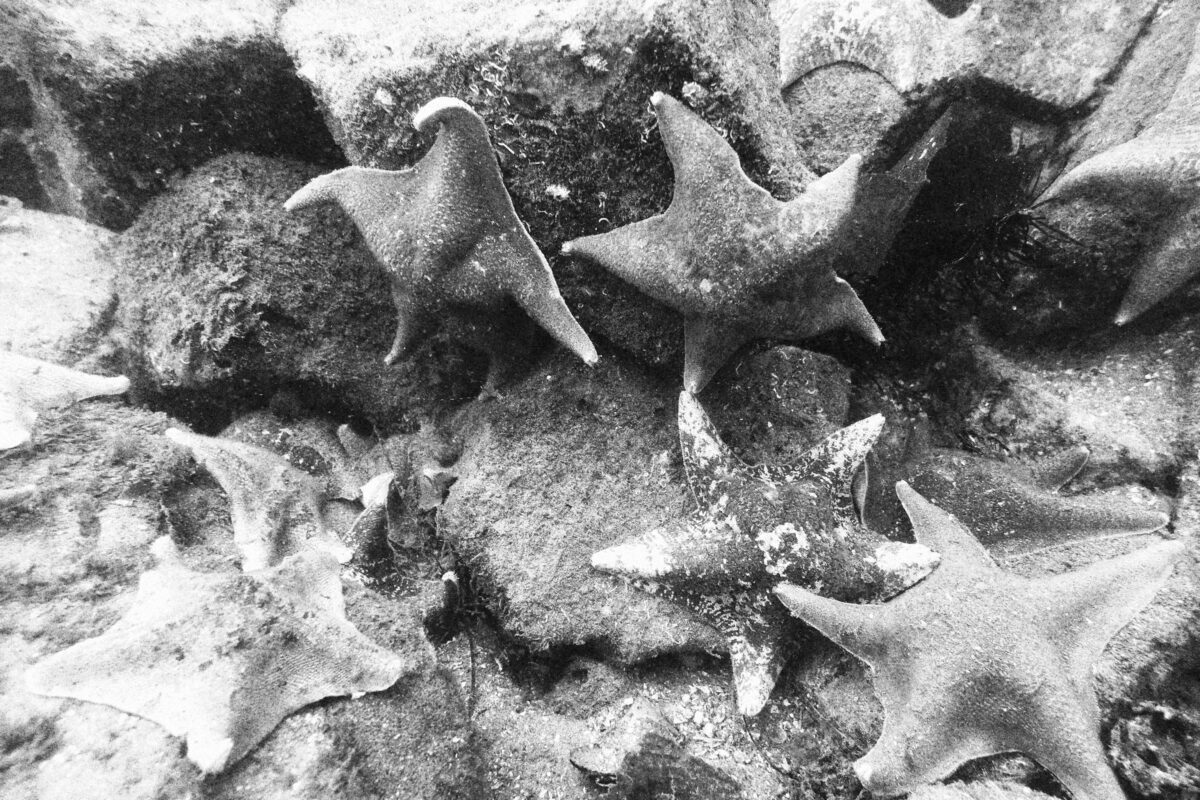


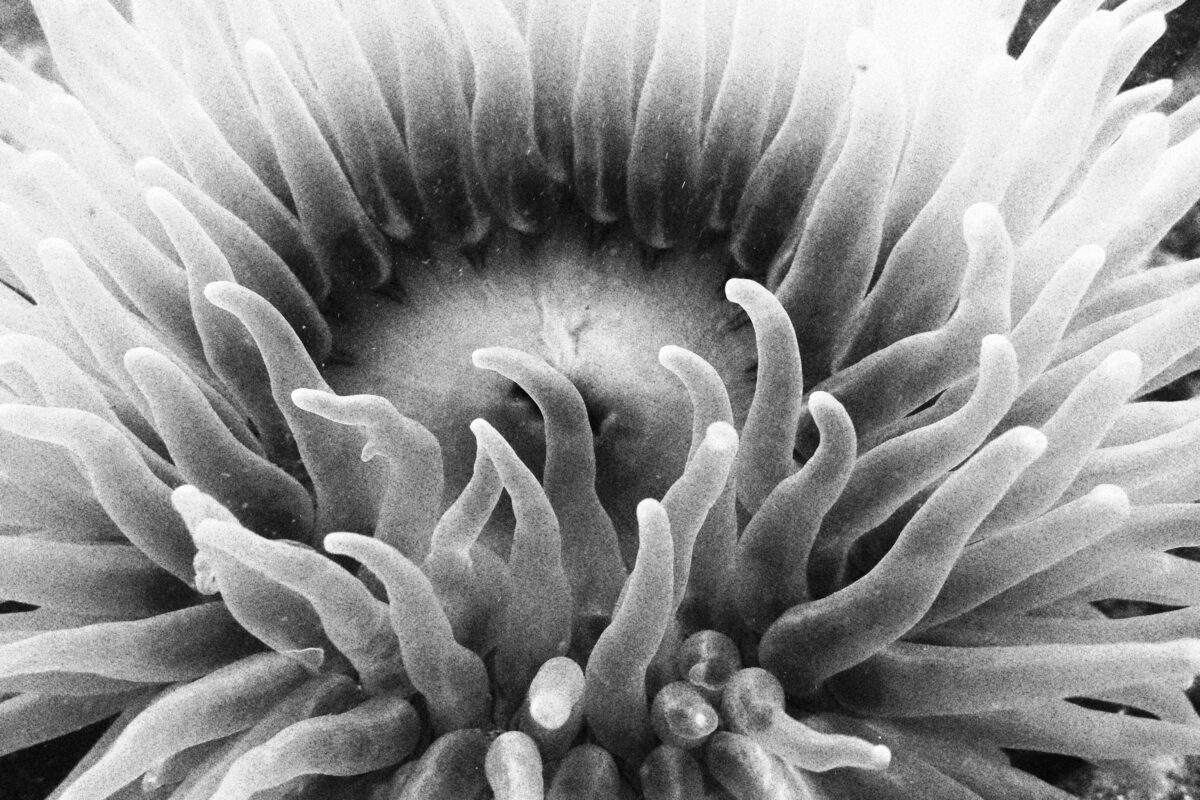
The next time, we went out in search of a bloom of sea nettles we had spotted a few days before. Despite the current being extremely strong and me almost losing complete sight of Russell, I was so happy with the way my pictures were turning out. They were getting better. Don’t get me wrong– there was still some work to be done, but overall my pictures improved vastly. I feel like I was finally starting to understand a bit more, not only about how my camera worked, but also about what worked for me with the camera. The dive we did was wonderful. Perhaps it was a bit scary since my face and hands were exposed to the sea nettles’ tentacles, but it was also fulfilling.
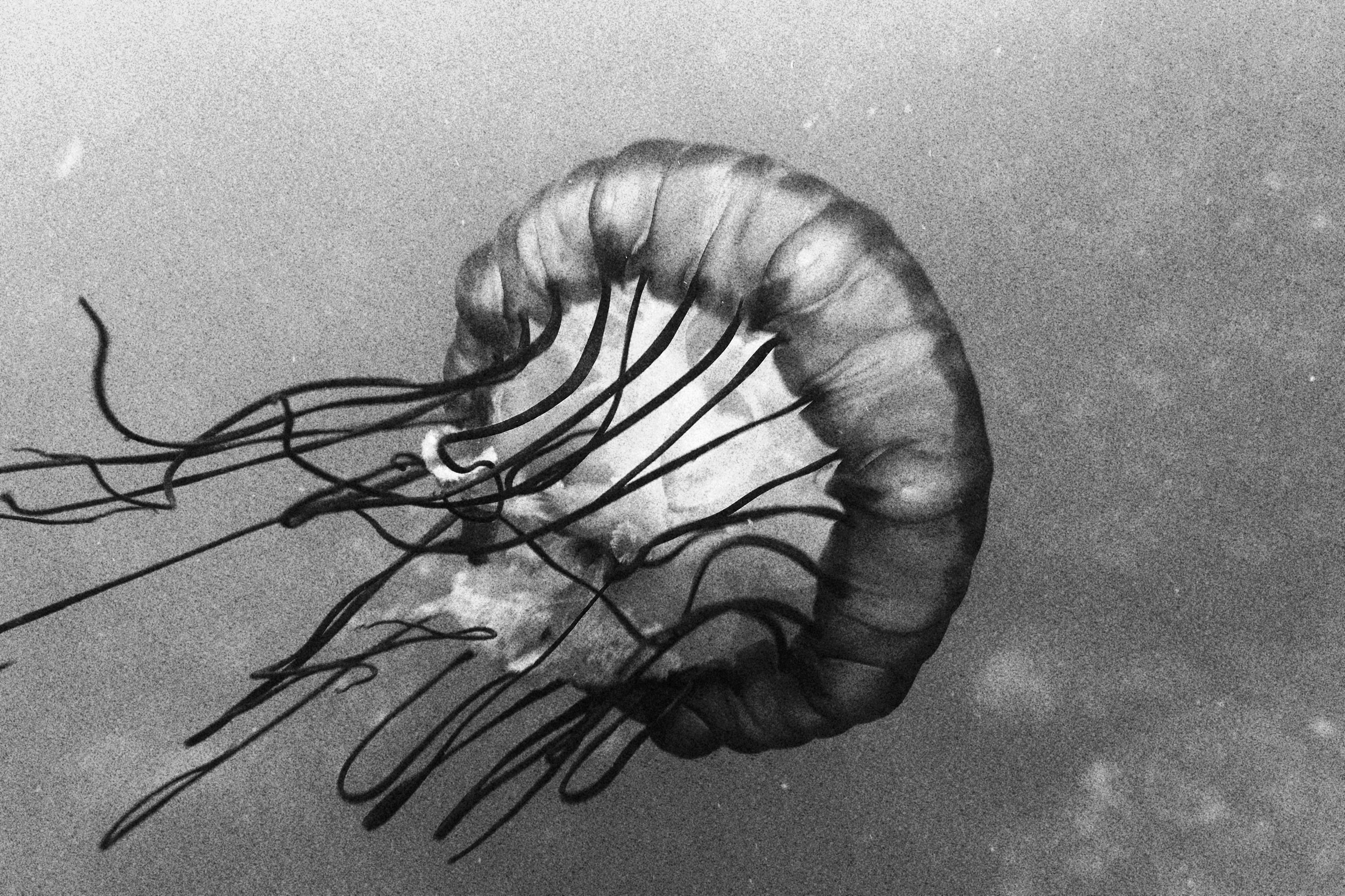

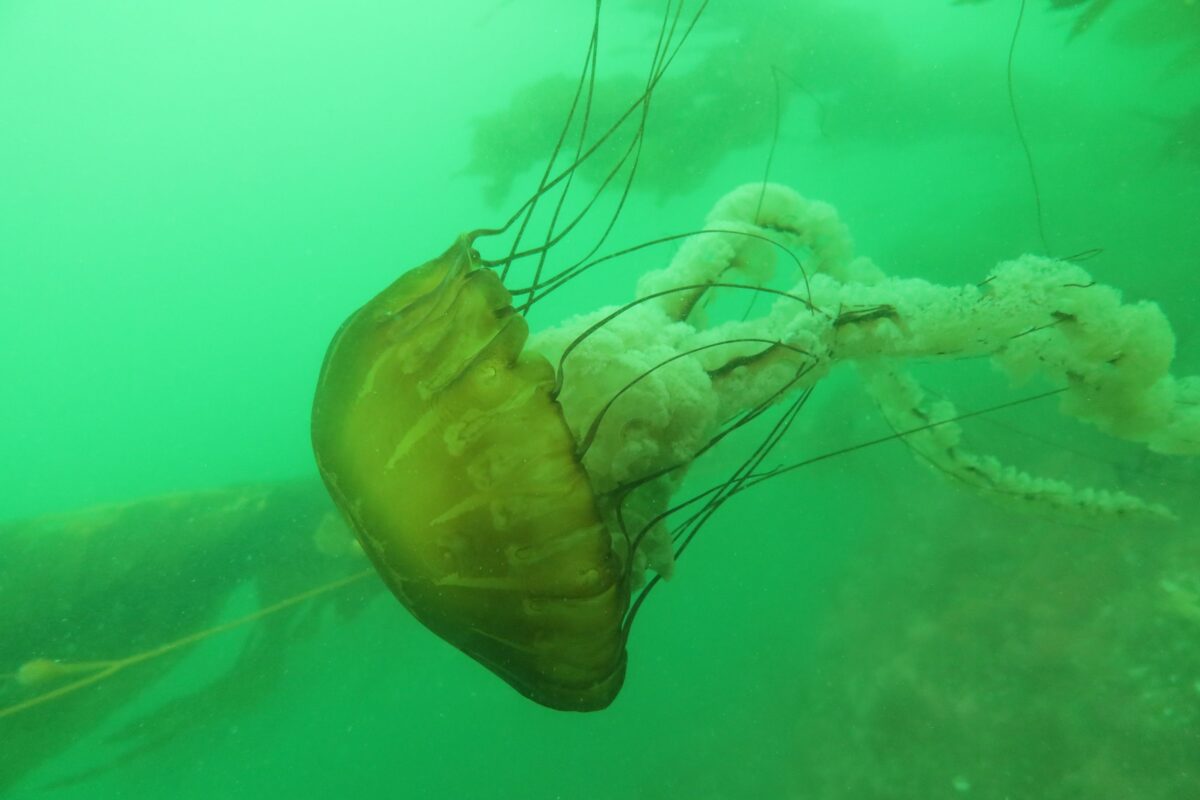
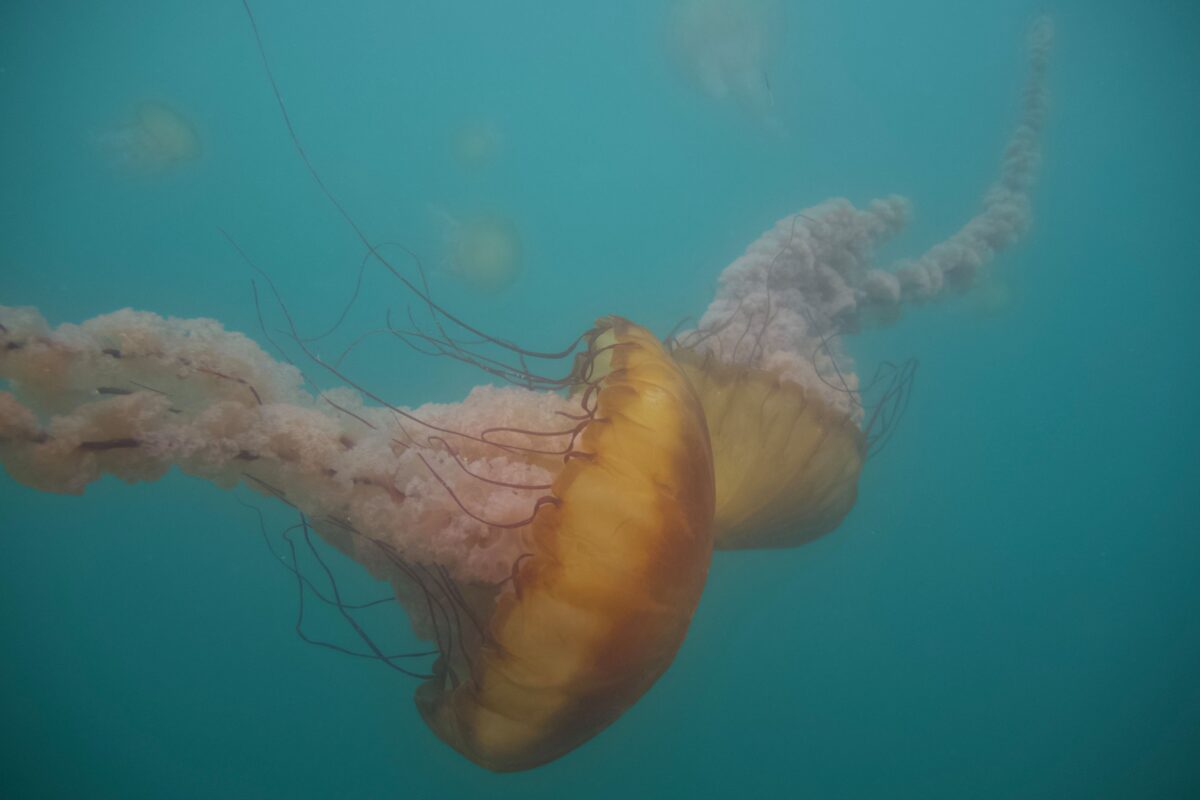
However, my last day there ended up being the best. Berkley took us out on his boat and dropped us off at the site that I didn’t get to dive earlier (when my drysuit flooded) with all the seals. Just as the images from the other dive indicated, the seals were everywhere! It was incredible. They even startled me a bit at times when they swam up close to me with their mouths open and at the last minute curved to the left or right. It was amazing, but it became even more so once a flock of the jellies we had seen earlier drifted in. They were everywhere! I took as many photos as I could, and it made the whole event quite a magical moment to remember.
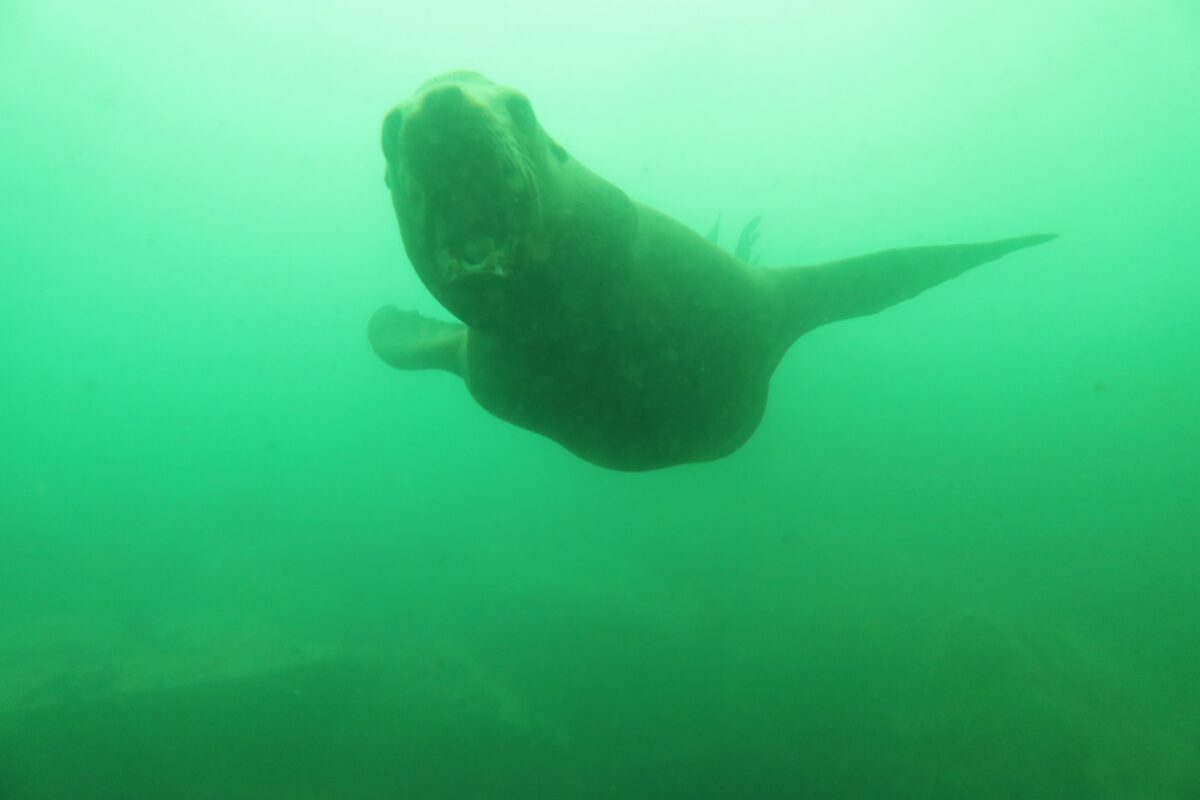
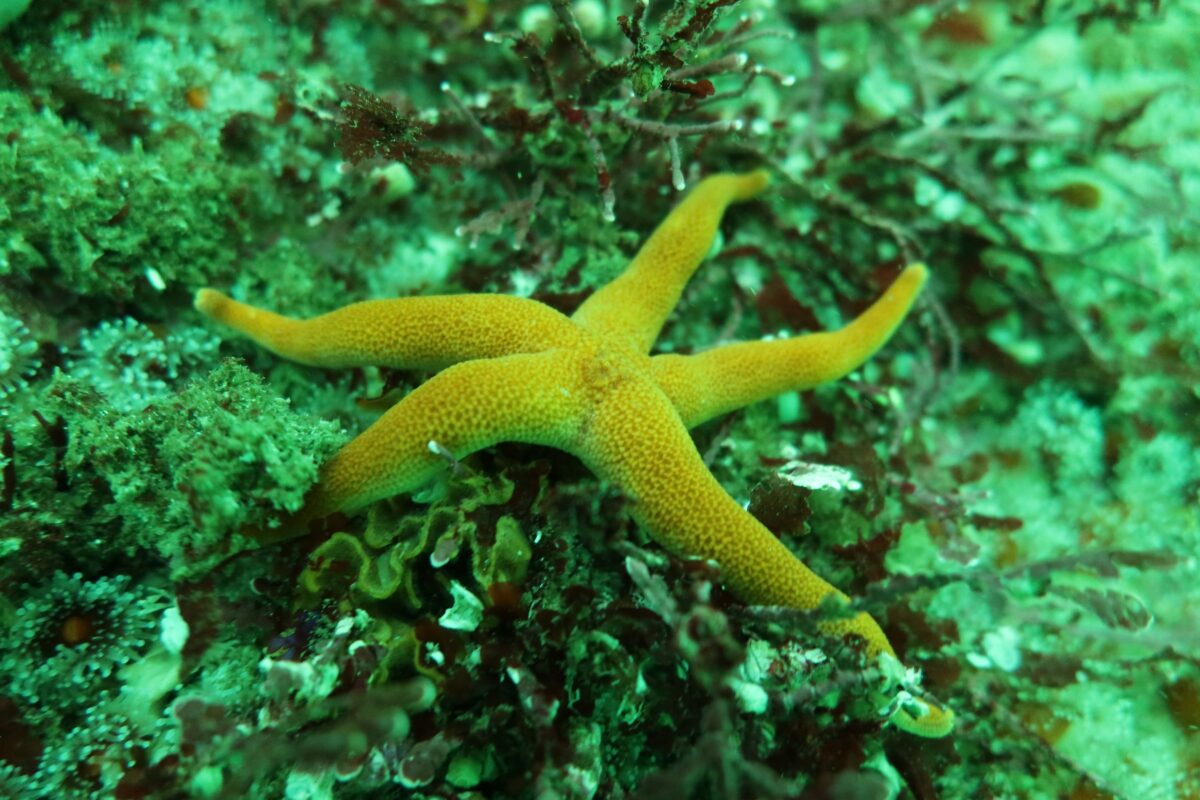





Thanks to Becca, after our morning dive Russell and I were able to visit the Monterey Bay Aquarium. It was cool to see a lot of the amazing art and exhibits at the Aquarium. We saw a lot of things that live in other parts of the sea but there were lots of animals there that reside in the bay waters as well, so that non-divers could see what animals lived in their local waters. It was such a nice experience and a wonderful gesture from Becca and her partner! Once we got back to Backscatter, I got some last bits of information from one of Backscatter’s employees on how to work a drone, which I had been pining for since I got one to further my image repertoire for presentations throughout my year. He quickly resolved all the issues I had been having and reminded me before I left that if I ever needed him or the rest of the team, I could simply call. It was very sweet and as I packed up my things, I said my goodbyes and let them know that one day I’d be the next underwater photographer extraordinaire! While that’s doubtful, one never knows. Either way, the moments and experiences I had at Backscatter taught me a lot and I was very happy to meet all of them.
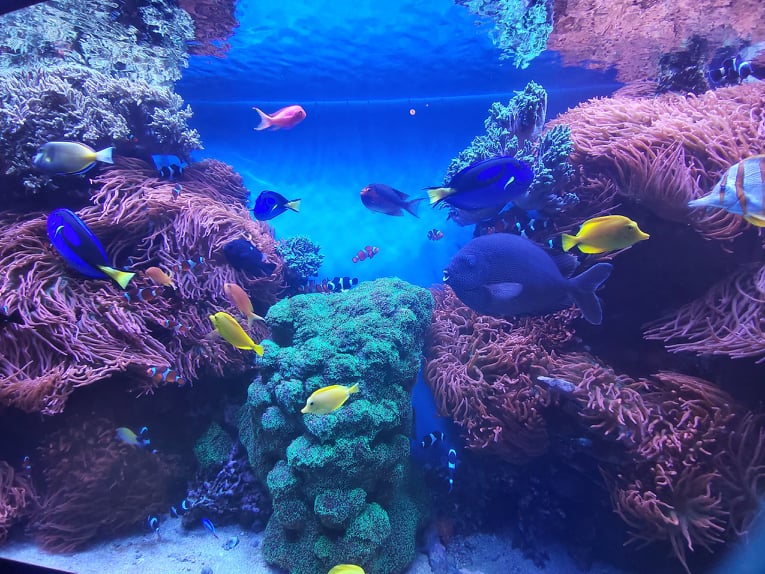

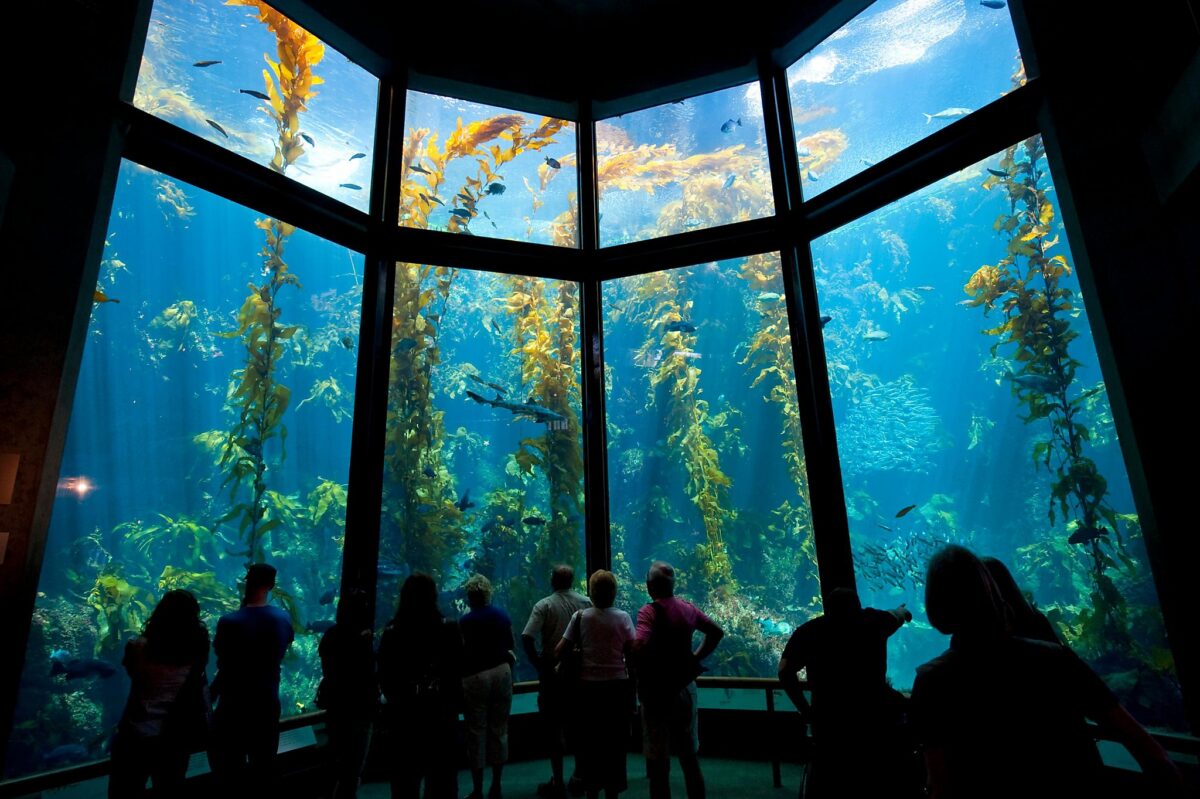


Once I got in Alison’s car and started driving, I knew there was one more place I still had to go. On my way back to San Francisco I stopped by to visit one of the leaders in portable lighting innovation, and a long-time supporter of OWUSS, Light and Motion. There I met up with Anne De Souza, the Marketing Manager of the company. Even though it was late in the day and most employees were leaving to start their weekends, she showed me around the building. I got to see the different areas and teams that worked on developing, creating, packaging, and selling their amazing lights. I got to see the labs that created the lights and got to learn a lot about how they worked. At the end of my tour, Anne was kind enough to even give me my own pair of lights specifically meant for diving and shooting underwater video. I couldn’t have thanked her enough!
As I drove up to San Francisco I thought about all the memories that I made while I was in Monterey. Even though I struggled a lot with understanding how to use my camera (and my new drysuit) I learned a lot! In my process, I was happy to have those moments and to be able to capture some of them. Because of that I will be forever grateful to Backscatter as well as Light and Motion, Reef Photo and Video, and Nauticam for endowing me with excellent photo equipment and the skills to learn even more in the future because at the end of the day, I feel like that’s what capturing all those little fun, embarrassing, and even disappointing moments is all about.
